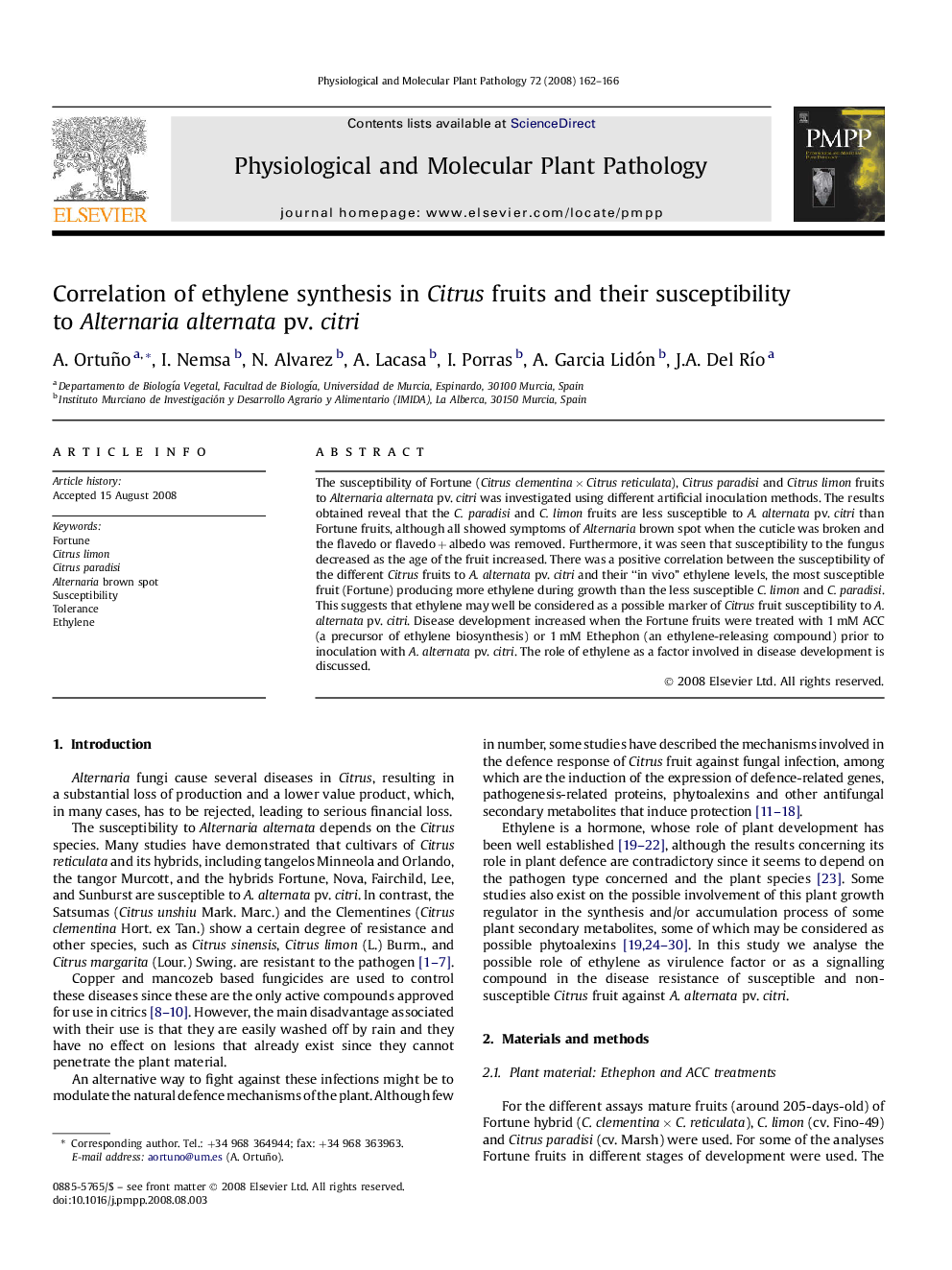| Article ID | Journal | Published Year | Pages | File Type |
|---|---|---|---|---|
| 2836683 | Physiological and Molecular Plant Pathology | 2008 | 5 Pages |
The susceptibility of Fortune (Citrus clementina × Citrus reticulata), Citrus paradisi and Citrus limon fruits to Alternaria alternata pv. citri was investigated using different artificial inoculation methods. The results obtained reveal that the C. paradisi and C. limon fruits are less susceptible to A. alternata pv. citri than Fortune fruits, although all showed symptoms of Alternaria brown spot when the cuticle was broken and the flavedo or flavedo + albedo was removed. Furthermore, it was seen that susceptibility to the fungus decreased as the age of the fruit increased. There was a positive correlation between the susceptibility of the different Citrus fruits to A. alternata pv. citri and their “in vivo” ethylene levels, the most susceptible fruit (Fortune) producing more ethylene during growth than the less susceptible C. limon and C. paradisi. This suggests that ethylene may well be considered as a possible marker of Citrus fruit susceptibility to A. alternata pv. citri. Disease development increased when the Fortune fruits were treated with 1 mM ACC (a precursor of ethylene biosynthesis) or 1 mM Ethephon (an ethylene-releasing compound) prior to inoculation with A. alternata pv. citri. The role of ethylene as a factor involved in disease development is discussed.
